Preventing water damage is crucial for safeguarding your home against unexpected floods. Implementing strategies such as basement waterproofing, roof leak prevention, and knowing your emergency water shut-off can ensure your property remains safe and secure.
Common Causes of Water Damage
Water damage can happen in many ways. Knowing these causes is key to preventing water damage in your home.
One big reason is plumbing issues. Leaky pipes, broken fixtures, or old plumbing can lead to leaks. Regular plumbing maintenance helps catch these problems early before they get worse and cost a lot to fix.
Another issue is moisture control. When humidity is high, it can cause water to condense on walls and ceilings. This might lead to mold and even hurt your home’s structural integrity. Using dehumidifiers and making sure there’s good airflow can help keep moisture levels in check.
Sewage backups are another threat. They can create messy, unhealthy conditions in your home. If not handled quickly, sewage backups can cause a lot of property damage. To prevent this, consider having your sewer lines inspected regularly and think about installing backflow valves.
Seasonal Risks in San Diego
San Diego’s weather creates special risks for water damage throughout the year. In the winter, heavy rains can increase the chances of flooding, especially in low areas or homes without good drainage systems. Before the rainy season hits, do a flood risk assessment to see if you need to improve drainage or put up barriers around your home.
During summer, heat and thunderstorms bring their own set of challenges for managing water. Home safety inspections during these times are important too. Make sure roofs are solid and gutters are clean so rainwater flows freely when storms hit.
By knowing how seasons change water damage risks, homeowners can better prepare to protect their homes from bad weather.
Recognizing Early Signs of Water Damage
Spotting early signs of water damage is very important for avoiding bigger problems later on. Homeowners should do regular visual plumbing inspections looking for stains on walls or ceilings. These could be clues that there are hidden leaks nearby.
Mold prevention starts with being aware; if you smell musty odors or see mold patches, act fast! Mold spreads easily when there’s moisture, especially in bathrooms and basements where humidity sticks around longer.
Home water leak detection devices can help too! They alert you right away if they find too much moisture anywhere in your house. These tools are really helpful for keeping your home safe from dampness!
Prevention Strategies for Inside the Home
Plumbing Maintenance Tips
Keeping your plumbing in shape is really important. Good maintenance helps catch problems before they turn into big, costly repairs.
Regular Inspections
Regular visual plumbing inspections can save you lots of trouble. Look for signs like rust or leaks on your pipes and fixtures. Catching these early means you can fix them before they get worse, keeping your home safe and sound.
Pipe Insulation Techniques
Insulating your pipes is a smart way to stop frozen pipes when it’s cold outside. If you live in a place where temperatures drop, make sure your pipes are insulated. This keeps the water flowing and cuts down on moisture, which can lead to mold.
Leak Detection Methods
Using leak detection methods at home helps you avoid major damage from hidden leaks
Installing Sensors
Think about installing leak detection systems with sensors. Put these in areas that are prone to leaks, like basements or under sinks. These sensors will alert you if there’s a leak, so you can fix it fast and prevent serious problems.
Monitoring Humidity Levels
Keeping an eye on indoor humidity levels is helpful too. Proper humidity not only stops mold but also helps you spot hidden leaks early. Use hygrometers to check humidity; aim for between 30% and 50% for a healthy home while keeping moisture issues at bay.
Emergency Shut-Off Procedures
Knowing how to quickly shut off your water supply can be super important during unexpected leaks or bursts.
Locating Your Main Valve
Make sure everyone at home knows where the main shut-off valve is. If there’s an emergency, quick access can help reduce damage from flooding due to broken pipes.
Automatic Shutoff Systems
Installing automatic shutoff systems can give you extra protection. These systems find leaks and shut off the water supply automatically, helping to keep your home safe from water damage without much effort on your part.
Protecting Exterior Areas
Roof Leak Prevention
Keeping your roof in good shape helps prevent leaks. It’s super important to check your roof often. Regular routine inspections can spot problems before they turn big. When looking at your roof, pay attention to damaged shingles or tiles that might need repairing. Even tiny cracks can let moisture in and cause trouble later.
Moisture control is key for roof leak prevention. Make sure your attic is well-ventilated and insulated. This stops condensation from forming on the underside of the roof, keeping your home dry and mold-free.
Weatherproofing homes can also help protect against leaks. You can use sealants around chimneys, vents, and skylights to block rainwater from getting inside. By doing these simple things, you can lower the chance of dealing with a roof leak.
Gutter Cleaning Practices
Cleaning gutters is really important for preventing water damage in San Diego homes. If gutters get clogged, they can’t move rainwater away from your house properly. This makes it more likely for water to overflow during storms or heavy rain.
You should do seasonal maintenance on your gutters at least twice a year—once in spring and once in fall. During these checks, remove leaves, twigs, and other junk that might be stuck in there.
Also, good drainage systems are needed to keep water away from your foundation and help stop erosion around gardens or flower beds. If you find any blockages while cleaning your gutters, clear them right away to keep the water flowing smoothly.
Along with regular cleaning practices, think about installing gutter guards. These will help keep debris out while letting rainwater pass through easily. Taking these steps will help you prevent serious water damage caused by faulty gutters.
Basement Waterproofing and Flood Protection
Basement Waterproofing Techniques
Basement waterproofing is key to keeping your home dry and safe. It stops water from getting in, which helps avoid mold and damage. Here are some important techniques:
- Sump Pump Installation: This helps collect extra water during storms.
- Sealing Cracks: Filling gaps stops moisture from sneaking in.
- Waterproofing Membranes: These act as barriers against water.
- Foundation Waterproofing: This protects the whole building.
Sump Pump Installation
Putting in a sump pump is one of the best ways to keep your basement dry. A sump pump catches excess water during heavy rains or melting snow. It pumps the water away from your home. This not only helps with flood prevention but also makes it easier to fix any leaks if they happen. Check your sump pump regularly to make sure it works when you need it.
Sealing Cracks
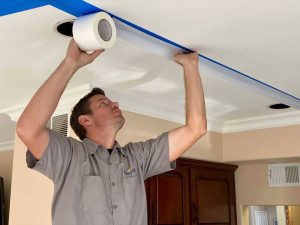
Sealing cracks in your basement walls and floors is super important for controlling moisture. Even small cracks can let water in, causing big problems later on. To keep your home safe, check the foundation often for any cracks that need sealing. Use strong sealants made for concrete or masonry to fill those gaps well.
Flood Protection Measures
Protecting against floods means taking steps inside and outside your home. Start by looking at how likely floods are in your area with a flood risk assessment. You might also want to think about landscape drainage solutions to help with this.
Elevation Strategies
Elevation strategies can help move rainwater away from places like basements. This means you might want to change how your yard is shaped or raise certain parts of your property. Installing proper drainage systems, like French drains, can help too by moving extra water safely away from your home.
Sandbags and Barriers
Using sandbags and barriers can provide quick protection during bad weather when floods might happen suddenly. They act as temporary walls that keep rising water away from important areas in or around your home. Make sure you have an emergency water shut-off valve nearby so you can quickly take action if needed.
Understanding Coverage Options
Water damage can cause a lot of trouble for homeowners. Knowing your insurance coverage can help you avoid problems later. Water damage insurance claims can be tricky, so it’s important to understand what your policy covers. This knowledge helps you deal with issues that come up after water damage occurs.
Types of Water Damage Insurance
Homeowners have different choices for water damage coverage in their home insurance policies. Most policies cover sudden leaks from things like pipes or appliances. If a pipe bursts unexpectedly, you’ll probably get help with the damages. But it’s smart to check the details of your specific policy.
Some people choose extra options called endorsements or riders. These can give you more protection against various types of water damage restoration situations. For example, sewer backups or overland flooding may not be covered in standard plans. Talking to an insurance agent can help you understand these home insurance coverage solutions better.
Common Exclusions in Policies
Even though many types of water damage are covered, some things might not be included. For example, gradual leaks often fall under maintenance issues and might not get covered unless proper property maintenance was done.
Flood damages usually need separate flood insurance because they come with different risks and costs. You might also need a structural integrity assessment if this happens.
Filing a Claim Effectively
After water damage, filing a claim can feel overwhelming. Following some simple steps can make it easier for you. First, be ready with good documentation when making a water damage insurance claim.
Documenting Damage for Claims
Start by doing a visual plumbing inspection as soon as you find a leak or flood. Take clear photos showing all the affected areas before cleaning anything up. This evidence helps support your case during claims processing. Keep track of moisture control measures you’ve already done to strengthen your position for compensation.
Working with Adjusters
After filing your claim, you’ll work with adjusters from the insurance company. They check on residential safety after the damage and look at things like previous flood prevention steps taken at your home.
Adjusters consider how well-maintained systems like gutters helped reduce risks identified in earlier inspections done during routine checks.
Tips for Successful Claims Processing
To keep the process running smoothly once everything is documented:
- Quickly find emergency water shut-off valves if needed to prevent more harm!
- Make sure to do regular appliance maintenance because old equipment can lead back to similar issues and unnecessary repairs.
By understanding coverage options and knowing how to file claims effectively, you can protect your home from the impacts of water damage while navigating insurance smoothly!
Maintaining Appliances
Keeping your appliances in good shape is really important. Regular maintenance helps prevent water damage and other issues at home. By checking things often, you can catch problems before they get big. This includes looking at plumbing, managing moisture, and ensuring your HVAC systems work well.
Importance of Regular Maintenance
Regular maintenance helps your appliances last longer. It also reduces the chance of costly repairs. You should check items like washing machines, dishwashers, and refrigerators for leaks or wear and tear. Keeping up with property maintenance not only guards against water damage but can also make your home more energy-efficient.
Common Appliance Issues to Watch For
Here are some common problems to look out for:
- Leaking Hoses: Check hoses on washing machines and dishwashers. Cracks or bulges mean it’s time for a replacement.
- Condensation: Too much moisture around your fridge or air conditioner? That could be a sign of trouble.
- Drain Clogs: Make sure drains from appliances are clear to stop flooding.
Using leak detection systems can alert you to these issues early so you can act fast.
Preparing For Vacations
Before you leave for vacation, make sure your home is safe from water issues. Taking steps now can save you from disasters while you’re away.
Steps to Secure Your Home Before Leaving
You should start by checking if your area is prone to floods. Look at all windows and doors to make sure they’re locked tight. Don’t forget to check places like basements or crawl spaces for weak spots before heading out.
Another smart move is to shut off the main water supply using the emergency water shut-off valve. This quick step can stop major leaks while you’re gone.
Setting Up Monitoring Systems
Installing monitoring systems in your home is a smart idea when you’re not there. Home water leak detection devices will let you know right away if there’s unusual moisture detected inside. Plus, keeping indoor humidity in check with dehumidifiers helps reduce the chances of mold growing when nobody’s around.
By being careful—both with regular appliance maintenance and getting ready before vacations—you lower the risk of serious water damage later on. So check those pipes today!
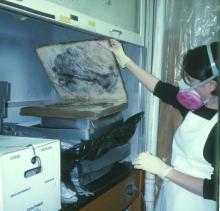
FAQs on Prevent Water Damage
1. What are effective water damage prevention tips?
To prevent water damage, maintain your plumbing regularly. Check for leaks and ensure proper drainage around your home. Install sump pumps and use waterproofing membranes in basements.
2. How can I protect my home from floods?
Use flood prevention strategies like elevating appliances and installing backflow valves. Regularly clean gutters and check drainage systems. Landscape drainage solutions help redirect water away from your foundation.
3. What impact does climate have on water damage?
Climate affects the risk of water damage. Heavy rains increase flooding risk, while humidity promotes mold growth. Understand local weather patterns to prepare effectively.
4. Why is structural integrity important for preventing water damage?
Structural integrity keeps your home safe from water intrusion. Regular inspections ensure that foundations and walls remain strong. Fix any cracks to maintain overall stability.
5. How do waterproofing membranes work?
Waterproofing membranes create a barrier against moisture. They stop water from seeping into foundations and walls, protecting your home from damage.
6. What should I do for frozen pipe prevention?
Insulate exposed pipes in colder areas to prevent freezing. Let faucets drip during cold snaps to relieve pressure, reducing the chance of burst pipes.
7. When should I perform a water line inspection?
Conduct a water line inspection annually or after severe weather events. Look for signs of leaks or corrosion in pipes to address issues early.
Additional Water Damage Prevention Strategies
- Regular Appliance Maintenance: Inspect appliances like washing machines for leaks.
- Humidity Control: Use dehumidifiers to maintain ideal indoor moisture levels.
- Emergency Preparation: Know the location of your main shut-off valve for quick access.
- Leak Detection Systems: Install sensors to alert you about potential leaks early.
- Supply Line Replacement: Replace old supply lines before they become a problem.
- Seasonal Checks: Prepare your home for seasonal changes to minimize risks.
- Visual Inspections: Perform routine checks around windows and doors for signs of leaks.

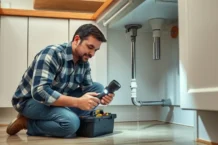
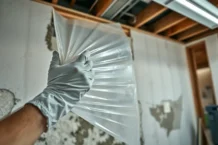
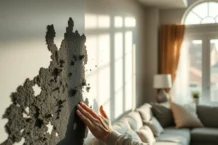
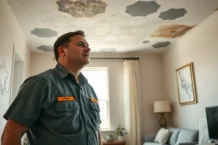
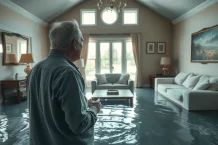
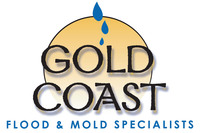


Follow Us!